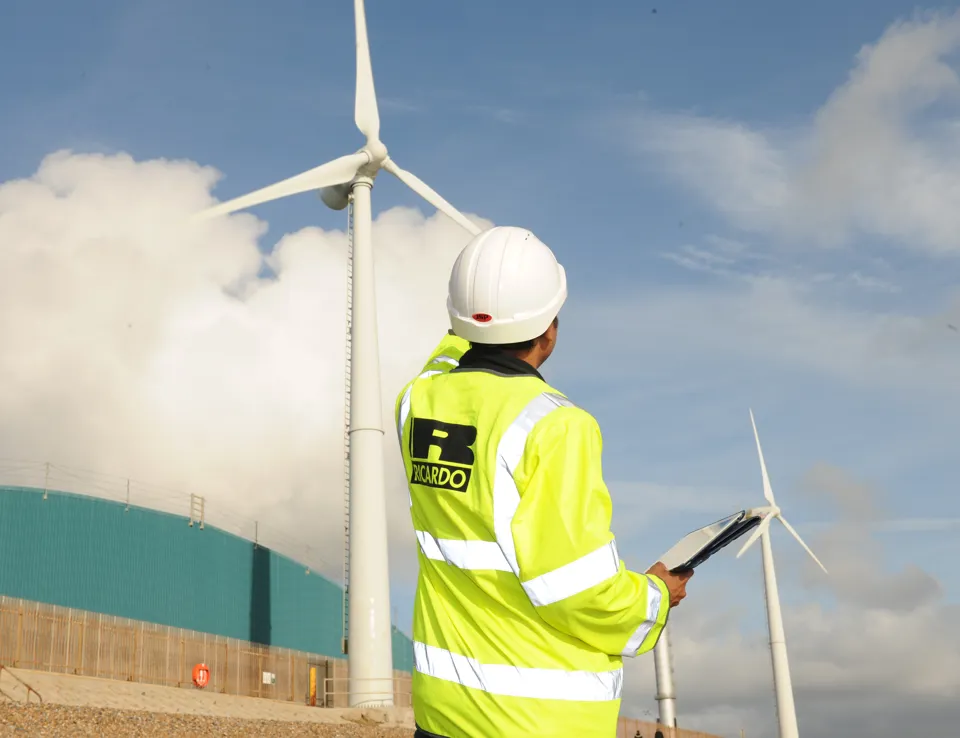Could COP29 put us on the path to more ambitious national climate commitments?
The Paris Agreement requires all participating countries to prepare their own Nationally Determined Contributions (NDCs) setting out targets for reducing greenhouse gas (GHG) emissions, strengthening adaptation to climate impacts, and ensuring a just and equitable transition. The submissions are often accompanied by details of their proposed policies and actions to ensure their effective implementation.
NDCs must be resubmitted every five years, with each generation expected to show progression in terms of ambition. The first NDCs were submitted in 2015, and the second editions in 2021 (having had a 12-month extension due to the pandemic). Many countries have also provided further NDC updates outside of the standard 5 year cycle, in response to the Glasgow Climate Pact (opens as a download) of COP26.
COP29 in Baku, Azerbaijan (November 11-22) is the last global conference before the third generation of Nationally Determined Contributions (known as NDCs 3.0) are due to be submitted, at which point they will rank among "the most important climate documents produced so far this century” (UNFCCC Executive Secretary Simon Stiell, March 2024).
Ricardo has been working closely with a range of organisations and countries to support the development of the 2025 submissions. Central to this work has been the development of the NDC 3.0 Navigator, an interactive tool designed to help nations develop their NDCs in a way that reflects the highest possible ambition and catalyses implementation.
The team at Ricardo worked with the NDC Partnership and UNFCCC to develop content for the Navigator, including both technical (e.g. target setting), and process elements (e.g. unlocking finance, identifying support needs, and ensuring technically sound documents).
So, what can we expect from the forthcoming submissions in early 2025, and how can the NDC 3.0 Navigator help?
What is the current state of play?
The world’s collective progress towards achieving the Paris Agreement is periodically assessed through a process known as the “Global Stocktake”.
The first such Global Stocktake, concluded at COP28 in 2023, found implementation of the last NDCs lacking. Furthermore, the IPCC later reported that NDCs have not been, as a whole, ambitious enough to meet the reductions needed.
COP29 is therefore an opportunity for all Parties to show how they can accelerate efforts.
The Baku gathering is also being referred to as the “Finance COP” as we can expect a focus on advancing financial mechanisms to support climate action implementation and, in particular, bridge the gap between the level of investment needed to achieve the goals of the Paris Agreement and current financial flows.
A key aim at COP29, for example, will be for Parties to reach an agreement on the “New Collective Quantified Goal on Climate Finance” or NCQG. This will reflect the amount of climate finance that should be mobilised by developed countries to support developing countries in taking action on climate change.
Parties will also be expected to increase pledges to the “Fund for responding to Loss and Damage” that was operationalised at COP28.
“The NDC 3.0 Navigator can support the development of stronger, more ambitious measures that will help the world get back on track to delivering the goals of the Paris Agreement.”
Maya Rubin
Consultant, Ricardo Climate Action Planning and Transparency

Emerging priorities for NDCs 3.0
Being “nationally determined”, NDC priorities will vary between different countries, but it is clear that some “hot topics”, many of which will be debated at COP29, have emerged:
Enhancing preparedness: Adaptation and Loss & Damage
COP28 saw the operationalisation of the Loss & Damage fund, reflecting that negative climate impacts are unavoidable and already occurring. Many countries have seen significant climate-related disasters in recent years, demonstrating the importance of climate change adaptation alongside mitigation. While inclusion of adaptation objectives in NDCs is optional, we expect many countries, particularly the lowest emitters in the global south, to state adaptation as the main priority (often referred to as an “adaptation-first” NDC). This means countries may also undertake greater exploration of opportunities at the adaptation-mitigation nexus.
How can the NDC 3.0 Navigator help? The NDC 3.0 Navigator contains numerous opportunities related to adaptation, including amplifying the adaptation-mitigation nexus, aligning NDCs and National Adaptation Plans (NAPs) and integrating Loss & Damage.
Raising ambition: the energy transition
As stated in the Paris Agreement, NDCs 3.0 must represent a progression from previous submissions. The Global Stocktake identified areas where greater international ambition is needed and issued a call for Parties to accelerate efforts related to the energy transition, including a shift away from fossil fuels and towards renewable energy sources.
As such, many countries are now looking to add/enhance energy sector targets in their NDCs 3.0, reflect specific actions related to shifting towards renewables, and undertake more detailed planning to support their implementation.
How can the NDC 3.0 Navigator help? The NDC 3.0 Navigator contains sections on exploring sector-specific opportunities for raised ambition (including a dedicated section for the energy sector) and including sector-specific targets in NDCs.
Policy alignment: Aligning to LT-LEDS
“Long-Term Low Emission Development Strategies”, or LT-LEDS, represent longer term planning than NDCs, and consider not only climate objectives, but also broader national development goals. Aligning to LT-LEDS, and other national development plans ensures plans/policies support one another and supports joined-up implementation.
We are finding that those countries who have already developed LT-LEDS are now looking to align their NDC 3.0, and countries who have not developed LT-LEDS are seeking support to do so. Importantly, our experience shows that where countries are also looking to develop an LT-LEDs, there are significant benefits from developing this in tandem with the NDC3.0 for consistency, and more efficient technical analysis and engagement processes.
How can the NDC 3.0 Navigator help? The NDC 3.0 Navigator contains sections on aligning the NDC and LT-LEDS, and aligning the NDC with adaptation commitments. There is also a section on mainstreaming the NDC into national planning processes.
Accelerating implementation: Understanding financial needs
The Stocktake also found implementation to be lacking, with access to climate finance for developing countries identified as a key bottleneck.
As a result, we are now seeing a greater focus on understanding the financial cost of implementing the NDC and identifying funding routes. Such funding routes may include support from development banks, but there is also increasing focus on ensuring national budgets are leveraged as far as possible, including ensuring climate commitments are mainstreamed into national budgeting processes.
How can the NDC 3.0 Navigator help? The NDC 3.0 Navigator contains numerous opportunities related to unlocking finance, including enhancing understanding of investment needs and assessing sources of climate finance.
Support and guidance to raise ambition
The primary audience for the NDC 3.0 Navigator is governments in developing countries and the organisations and individuals who may support them in developing NDCs 3.0. Such governments often have low capacity to develop NDCs, whether due to limited resources, or limited in-house climate change expertise. The NDC 3.0 Navigator will support these governments to identify nationally appropriate opportunities to raise ambition and signpost them towards further guidance on key topics and available support.
In this way, the NDC 3.0 Navigator can assist the development of stronger, more ambitious measures that will help the world get back on track to delivering the goals of the Paris Agreement.

Why choose Ricardo
As well as authoring much of the content in the NDC 3.0 Navigator that will support the 2025 editions, Ricardo has worked with a large number of countries during previous rounds of NDCs, often providing technical support on elements such as targets, emissions modelling, reflection of activities and responses, stakeholder engagement, etc.
We are also currently supporting the NDC Partnership with their Global Call activities (see: Global Call)
Our team includes experts on climate change mitigation, adaptation, finance, stakeholder engagement, just transition, and transparency.
Find out how we can help your team develop their latest NDC submissions.









